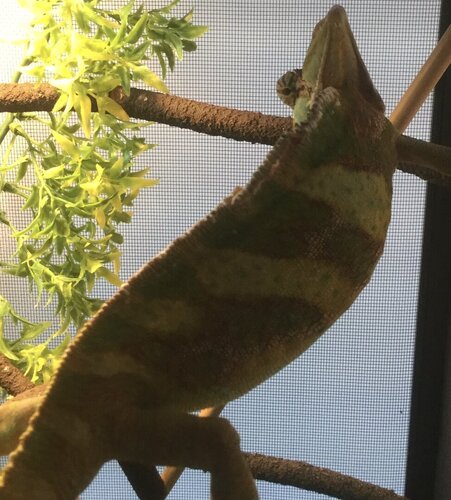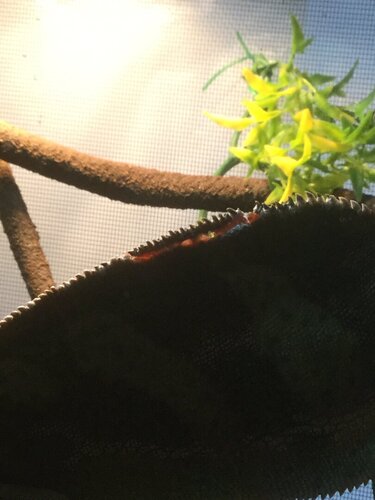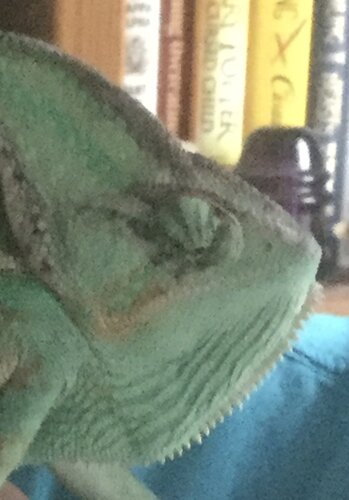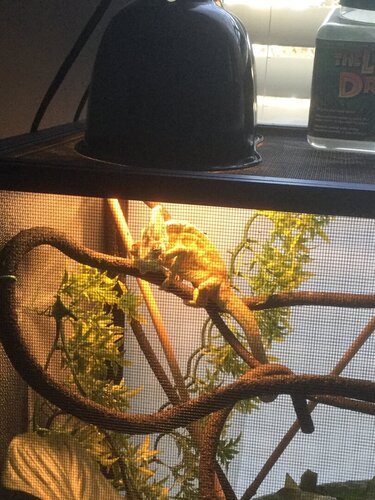I have two veiled chameleons, one male and one female, housed separately. Both about 1 1/2 years old. The female will eat anything I put in her cage. He does not. He has always been thin. He will eat worms everyday if I provided them, but will walk away sometimes without eating them all.
noticed his back has a gap along the ridge. Thought maybe this was caused by a bad shed or he got too close to the year lamp.
Could not get him to stay in the side view position so hope you can get the idea from this one.
wondering if anyone has noticed this condition before
noticed his back has a gap along the ridge. Thought maybe this was caused by a bad shed or he got too close to the year lamp.
Could not get him to stay in the side view position so hope you can get the idea from this one.
wondering if anyone has noticed this condition before








